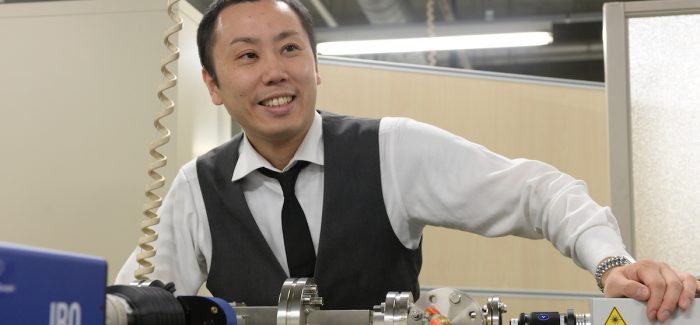Patent of the Month – ThermoAcoustic Engine
Editor | On 30, Mar 2018
Darrell Mann
Well, it’s never going to win prizes for readability, but patent of the month this month is nevertheless an elegant evolution of the thermoacoustic engine. US9,777,951 was granted to a quartet of inventors at Tokai University in Japan on 3 October. Fortunately, there’s quite a lot of coverage of the basic problem solved by the inventors in the online technical media. First up, a brief introduction to the basic technology:
Thermoacoustic engines work by heating, cooling and oscillating sound waves created by the thermal expansion and contraction of gases such as helium in enclosed dedicated cavities. TA engines were first devised in the late 1990s and early 2000’s by researchers in the US, leading to researchers worldwide beginning projects to develop high efficiency TA engines that convert heat into useful power. However major barriers to their application have been operating systems at a high enough efficiency at temperatures of less than 300°C and developing a robust enough design for everyday use.
The researchers from Japan have now successfully demonstrated a refrigerator powered by a low temperature heat source that generated sound waves in an innovative multistage traveling wave thermoacoustic engine.
The refrigerator achieved a minimum cold temperature of -107.4 áµ’C when the hot temperature was less than 300 áµ’C.
The multistage-type thermoacoustic engine does not have moving parts and operates at less than 300°C, the temperature of more than 80% of industrial waste heat, according to the researchers.
Shinya Hasegawa, associate professor of Prime Mover Engineering at the University said: “TA engines do not have moving parts, are easy to maintain, have potentially high efficiency, and are low cost. My goals in this research are to develop TA engines that operate at less than 300 áµ’C, and also to demonstrate a refrigerator temperature of-200 áµ’C.”
The travelling wave thermoacoustic refrigerator (TWTR) consists of three etched stainless-steel mesh regenerators installed at optimal positions (“close to the sweet spot”) within the prime mover loop and one fixed in the refrigerator loop. This configuration was designed to trigger thermoacoustic oscillations at lower temperatures and yield a refrigerator temperature of less than -100 áµ’C.
The flow channels of the regenerators ranged between 0.2 to 0.3 mm and their lengths were 30 to 120 mm, depending on location. Furthermore, the TWTR had heat exchangers in the form of parallel plates of copper (1.0 mm thick and 27.0 in length) with a 2.0 mm gap.
The coefficient of performance (COP) increased as the temperature of the heat exchangers in the primer loop was increased and the maximum value of COP was 0.029 at 260°C, and the corresponding cooling power was 35.6W.
The researchers also obtained gas oscillations at 85 °C and observed refrigeration (-42.3 ᵒC) at 90 ᵒC, which is lower than the boiling point of water. Moreover, achieved a minimum cold temperature of -107.4 ᵒC when the hot temperature was less than 300 ᵒC, thereby, opening up possibilities for applications of this technology for refrigeration and power generation using low temperature waste heat in factories and automobile engines. The findings are published in the journal of Applied Thermal Engineering, November 2016.
The thermoacoustic energy conversion of this design is determined by two factors: the ratio of the diameter of the flow channel and the thermal penetration depth, and the phase difference between the pressure and the cross-sectional mean velocity.
Two of the main hurdles to the proliferation of this technology are: (1) a system operable at less than 300 áµ’C as compared to the temperature of most industrial waste heat which ranges from 400 to 600 áµ’C; and (2) robust design so that the systems could be used in a wide range of environments such as fishing boats and heavy industries.
The basic problem being solved is the conflict between the desire to increase efficiency of the engine being hindered by the need for higher temperatures than are easy to achieve. Here’s what that problem looks like when mapped on to the Contradiction Matrix:
The basic ‘multi-stage’ aspect of the solution offers up a good illustration of Principle 1, but the main inventive steps seem to be more closely attributable to Principle 31 (see the cross-sectional image in the opening figure) and Principle 7, Nested Doll. The secret to the success of the design, in other words, comes down to the different sizes of the adjacent segments of the engine:
It still looks like thermoacoustics are some way away from full commercial exploitation, but this invention overcomes a major technical obstacle. Being able to operate at temperatures of less than 300degC opens up the possibility to tap into a large number of waste heat sources like internal combustion engines, heating boilers and solar cells. With a following wind, these things could make a big difference to the global energy problem.
References:
-
- Esmatullah Maiwand Sharify; Shinya Hasegawa: Traveling-wave thermoacoustic refrigerator driven by a multistage traveling-wave thermoacoustic engine, Applied Thermal Engineering (2017).
- Mariko Senga; Shinya Hasegawa: Design and experimental verification of a cascade traveling-wave thermoacoustic amplifier, Journal of Applied



